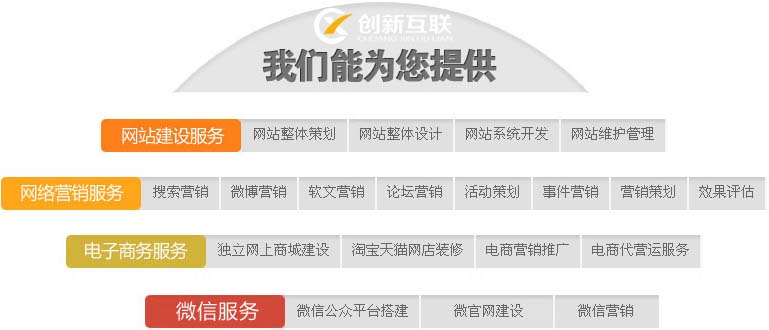使用C#实现远程启动之原理及方法
如果叫你实现远程启动别人的计算机,你首先想到的可能是先做一个在远程计算机上面运行客户端程序,然后在本地计算机上面再做一个服务器端 程序,通过这二个程序直接的通讯实现重启远程计算机。这当然是一个方法。但这未免有点麻烦。如果现在只告诉你远程计算机的管理者的登陆帐号,而并不允许你在远程的计算机上面运行一个所谓的客户端程序,让你通过程序来完成重启远程计算机。不知道你是否感觉有些困难了。其实按照上面的这些条件实现重启远程计算机,利用C#可以比较方便的完成。下面就来介绍一下具体的实现方法。

1.C#重启远程计算机的一些理论知识:
C#实现启动远程计算机的原理是"视窗管理规范"。就是所谓的"WMI"(Windows Management Instrumentation)。Windows 管理规范 (WMI) 支持通过 Internet 管理系统的结构。通过提供管理环境的一致观察,WMI 为用户提供通用访问管理信息。该管理的一致性使您能够管理整个系统,而不只是组件。从 Microsoft MSDN上,您可以获得有关 WMI 软件开发工具包 (SDK) 的详细信息。
WMI(Windows 管理规范)支持有限的安全格式,允许用户在本地计算机或远程计算机上连接 WMI 之前要验证每个用户。这种安全性 是操作系统已有的安全顶端的另一层。WMI 不覆盖或破坏由操作系统提供的任何现有的安全性。在默认情况下,管理员组的所有成员都可以完全控制它管理的计算机上的 WMI 服务。其他所有用户在其本地计算机上只有读取/写入/执行的权限。可以通过向被管理的计算机上的管理员组添加用户,或者在 WMI 中授权用户或组并设置权限级别来更改权限。访问基于 WMI 名称空间。在一般情况下,脚本程序的默认命名空间是"root\cimv2"。
在WMI中有着许多足以令我们感觉惊奇的功能。重启远程计算机只是一个很小的功能。在程序中使用WMI可以编写出许多远程管理类型的应用程序。由于在.Net FrameWork SDK中提供了可以直接操作WMI的名称空间,所以C#就可以利用在这些名称空间中定义了的类来充分使用WMI控制给我们带来的各种方便。
2.程序设计和运行的环境设置:
(1).windows 2000 Professional
(2). .Net FrameWork SDK
(3).远程计算机的管理者帐号
以上这些不仅是本地计算机配置,还是远程计算机的配置。
3.实现重启远程计算机所使用到在.Net FrameWork SDK用以操作WMI名称空间和类:
添加引用System.Management;
在.Net FrameWork SDK中用来操作WMI的名称空间主要是"System.Management"。要实现重启远程计算机所使用到的类主要有六个:
· "ConneCTionOptions"类主要定义远程计算机的管理员帐号;
·"ManagementScope"主要是以给定的管理员帐号连接给定计算机名或者IP地址的计算机;
·"ObjectQuery"类功能是定义对远程计算机要实现那些地远程操作;
·"ManagementObjectSearcher"类从已经完成远程连接的计算机中,得到有那些WMI操作;
·"ManagementObjectCollection"类存放得到WMI操作;
·"ManagementObject"类调用远程计算机可进行WMI操作。
在本文介绍的操作就是重启操作。
4.C#重启远程计算机的重要步骤和实现方法:
(1).连接远程计算机:
按照下列语句可以实现连接远程计算机:
ConnectionOptions options = new ConnectionOptions ( ) ; |
(2).得到在远程计算机中可以进行WMI控制:
System.Management.ObjectQuery oq = new System.Management.ObjectQuery ( "SELECT
* FROM Win32_OperatingSystem" ) ; |
(3).调用WMI控制,实现重启远程计算机:
foreach ( ManagementObject mo in queryCollection1 ) |
5.C#实现重启远程计算机的源程序代码(boot.cs)和执行界面:
在了解了C#实现重启远程计算机的这些重要步骤后,就可以从容的得到重启远程计算机的完整代码,具体如下:
using System;
using System.Drawing;
using System.Collections;
using System.ComponentModel;
using System.Windows.Forms;
using System.Data;
using System.Management;
namespace ReStartboot
{
///
/// Form1 的摘要说明。
///
public class Form1 : System.Windows.Forms.Form
{
private System.Drawing.Printing.PrintDocument printDocument1;
private System.Windows.Forms.Label label1;
private System.Windows.Forms.Label label2;
private System.Windows.Forms.Label label3;
private System.Windows.Forms.TextBox textBox1;
private System.Windows.Forms.TextBox textBox2;
private System.Windows.Forms.TextBox textBox3;
private System.Windows.Forms.Button button1;
///
/// 必需的设计器变量。
///
private System.ComponentModel.Container components = null;
public Form1()
{
//
// Windows 窗体设计器支持所必需的
//
InitializeComponent();
//
// TODO: 在 InitializeComponent 调用后添加任何构造函数代码
//
}
///
/// 清理所有正在使用的资源。
///
protected override void Dispose(bool disposing)
{
if (disposing)
{
if (components != null)
{
components.Dispose();
}
}
base.Dispose(disposing);
}
#region Windows Form Designer generated code
///
/// 设计器支持所需的方法 - 不要使用代码编辑器修改
/// 此方法的内容。
///
private void InitializeComponent()
{
this.printDocument1 = new System.Drawing.Printing.PrintDocument();
this.label1 = new System.Windows.Forms.Label();
this.label2 = new System.Windows.Forms.Label();
this.label3 = new System.Windows.Forms.Label();
this.textBox1 = new System.Windows.Forms.TextBox();
this.textBox2 = new System.Windows.Forms.TextBox();
this.textBox3 = new System.Windows.Forms.TextBox();
this.button1 = new System.Windows.Forms.Button();
this.SuspendLayout();
//
// label1
//
this.label1.Location = new System.Drawing.Point(16, 32);
this.label1.Name = "label1";
this.label1.Size = new System.Drawing.Size(120, 23);
this.label1.TabIndex = 0;
this.label1.Text = "远程计算机名或IP:";
this.label1.TextAlign = System.Drawing.ContentAlignment.MiddleRight;
//
// label2
//
this.label2.Anchor = System.Windows.Forms.AnchorStyles.Top;
this.label2.Location = new System.Drawing.Point(32, 80);
this.label2.Name = "label2";
this.label2.TabIndex = 1;
this.label2.Text = "管理员名:";
this.label2.TextAlign = System.Drawing.ContentAlignment.MiddleRight;
//
// label3
//
this.label3.Location = new System.Drawing.Point(32, 128);
this.label3.Name = "label3";
this.label3.TabIndex = 2;
this.label3.Text = "密码:";
this.label3.TextAlign = System.Drawing.ContentAlignment.MiddleRight;
//
// textBox1
//
this.textBox1.Location = new System.Drawing.Point(136, 32);
this.textBox1.Name = "textBox1";
this.textBox1.Size = new System.Drawing.Size(152, 21);
this.textBox1.TabIndex = 3;
this.textBox1.Text = "";
//
// textBox2
//
this.textBox2.Location = new System.Drawing.Point(136, 80);
this.textBox2.Name = "textBox2";
this.textBox2.Size = new System.Drawing.Size(152, 21);
this.textBox2.TabIndex = 4;
this.textBox2.Text = "";
//
// textBox3
//
this.textBox3.Location = new System.Drawing.Point(136, 128);
this.textBox3.Name = "textBox3";
this.textBox3.Size = new System.Drawing.Size(152, 21);
this.textBox3.TabIndex = 5;
this.textBox3.Text = "";
//
// button1
//
this.button1.Location = new System.Drawing.Point(104, 168);
this.button1.Name = "button1";
this.button1.Size = new System.Drawing.Size(120, 23);
this.button1.TabIndex = 6;
this.button1.Text = "重启远程计算机";
this.button1.Click += new System.EventHandler(this.button1_Click);
//
// Form1
//
this.AutoScaleBaseSize = new System.Drawing.Size(6, 14);
this.ClientSize = new System.Drawing.Size(320, 213);
this.Controls.AddRange(new System.Windows.Forms.Control[] { this.label1 });
this.Name = "Form1";
this.Text = "重启远程计算机";
this.ResumeLayout(false);
}
#endregion
///
/// 应用程序的主入口点。
///
[STAThread]
static void Main()
{
Application.Run(new Form1());
}
private void button1_Click(object sender, System.EventArgs e)
{
//定义连接远程计算机的一些选项
ConnectionOptions options = new ConnectionOptions();
options.Username = textBox2.Text;
options.Password = textBox3.Text;
ManagementScope scope = new ManagementScope( "\\\\" + textBox1.Text + "\\root\\cimv2", options);
try
{
//用给定管理者用户名和口令连接远程的计算机
scope.Connect();
ObjectQuery oq = new ObjectQuery( "select * from win32_OperatingSystem");
ManagementObjectSearcher query1 = new ManagementObjectSearcher(scope, oq);
ManagementObjectCollection queryCollection1 = query1.Get();
foreach (ManagementObject mo in queryCollection1)
{
string[] ss = { "" };
mo.InvokeMethod( "Reboot", ss);
}
}
catch (Exception er)
{
MessageBox.Show( "连接" + textBox1.Text + "出错,出错信息为:" + er.Message);
}
}
}
}
新闻标题:使用C#实现远程启动之原理及方法
网页路径:http://www.csdahua.cn/qtweb/news10/452110.html
网站建设、网络推广公司-快上网,是专注品牌与效果的网站制作,网络营销seo公司;服务项目有等
声明:本网站发布的内容(图片、视频和文字)以用户投稿、用户转载内容为主,如果涉及侵权请尽快告知,我们将会在第一时间删除。文章观点不代表本网站立场,如需处理请联系客服。电话:028-86922220;邮箱:631063699@qq.com。内容未经允许不得转载,或转载时需注明来源: 快上网
- 8uftp是什么?(8uftp连接不上服务器)
- 如何快速提高php
- 怎样查看路由器的域名?(如何查看网站域名情况)
- 探究当前主流数据库系统(当前数据库系统的主流)
- 哪里可以做网站教程,java做网站教程(java怎么开发网站)
- 网站域名注册信息怎么查询?网站域名注册信息查询方法?(如何查询域名注册信息)
- c语言怎么输入文件名称
- 如何使用鲁大师来更新电脑的显卡驱动?
- cydiaimpactor报错97
- (SOCKS4、SOCKS5和HTTP代理,这几种网络代理方式有什么区别?)
- 公有云的安全性如何保障?
- 8代cpu能装xp吗?xp安装windows8
- 五分钟完全弄懂C#特性
- 怎样才能在电脑WINDOWS98玩蜘蛛纸牌?windows7蜘蛛纸牌
- webstorm如何运行html